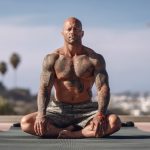What Is Rolfing, and Could It Be the Key to Overcoming Trauma?

Disclaimer: This article delves into the practice of Rolfing, a type of bodywork, and explores its potential use for individuals dealing with trauma and PTSD. Please remember that this is informational content and not a substitute for professional medical advice. Always consult with a healthcare provider for personalized recommendations.
Table of contents
Ever stumbled upon something that just sounded too good to be true? That’s how many feel when they first hear about Rolfing. No, it’s not a fitness regimen or some new culinary trend. It’s a form of body therapy that’s intriguing wellness enthusiasts and researchers alike. But here’s the real twist: people are using it to tackle trauma and PTSD. So, buckle up as we dive into the fascinating and complex world of Rolfing.
What Is Rolfing?
Let’s start with the basics. Rolfing, named after its creator, Dr. Ida Rolf, began in the 1960s. The idea was simple but revolutionary: align the body’s structure by manipulating the connective tissues. Imagine realigning the skeleton, softening the muscles, and changing how you stand, move, and even feel. Sounds pretty extraordinary, right?
But wait, there’s more. Rolfing doesn’t just aim to fix those physical quirks. It’s about connecting body and mind, improving posture, movement, and overall well-being. It’s not an easy-breezy massage but a series of sessions where practitioners work closely with clients to achieve balance and integration.
Here’s a short video to give you an overview:
Trauma and PTSD: More Than Meets the Eye
We’ve all heard of trauma and Post-Traumatic Stress Disorder (PTSD), but understanding them is a whole other ball game. Trauma isn’t just a scary experience; it’s an event that overwhelms the body and mind. PTSD, or Post-Traumatic Stress Disorder, is like the echo of trauma. It’s the nightmares, flashbacks, and a whole array of symptoms that can persist for years.
And here’s the kicker: Trauma isn’t just mental. It can seep into your physical body, causing chronic pain, tension, and more. Traditional treatments like counseling and medication are vital, but they don’t always reach those deep-seated physical manifestations. That’s where Rolfing might just have a role to play.
When it comes to trauma and PTSD, the complexities go far beyond superficial symptoms. Understanding these complexities is key to appreciating why therapies like Rolfing may hold potential as unconventional approaches to healing.
1. The Multifaceted Nature of Trauma: Trauma is not a one-size-fits-all experience. It can manifest in various forms, such as emotional, physical, or even spiritual, and may affect different individuals in unique ways. This multifaceted nature of trauma calls for a diverse array of treatment options, potentially opening the door for alternative therapies like Rolfing.
2. The Body’s Response to Trauma: Trauma is often thought of as a mental health issue, but it can leave tangible imprints on the body. Stress hormones, muscle tension, and changes in posture are common physical manifestations that might be addressed through bodywork like Rolfing. Some survivors of trauma find that conventional therapy does not fully address these physical symptoms, leading them to seek out alternative methods.
3. Individualized Treatment and the Role of Rolfing: PTSD treatment often requires a highly personalized approach, taking into account the individual’s unique experiences, symptoms, and needs. Rolfing’s focus on body awareness and alignment may offer a complementary pathway for addressing trauma by engaging the patient in a different kind of healing process. Some practitioners argue that Rolfing can reach places in the psyche where talk therapy alone may not penetrate.
4. Challenges and Controversies in Using Rolfing for Trauma: While Rolfing’s potential in trauma treatment is an exciting prospect, it’s not without controversy. The lack of extensive scientific research and standardized practices can create skepticism. Moreover, the physical nature of Rolfing may not be suitable for all trauma survivors, particularly those with sensitivities to touch or certain physical conditions.
5. The Importance of a Holistic Approach: Addressing trauma and PTSD often requires a combination of treatments and therapies. Rolfing may fit into this picture as part of a broader, holistic approach. Integrating Rolfing with traditional psychotherapy, medication, or other supportive therapies could create a comprehensive treatment plan that addresses the mind and body connection in healing trauma.
In conclusion, trauma and PTSD are highly complex conditions that demand multifaceted, individualized treatment. The potential role of Rolfing in this landscape is intriguing, but it requires careful consideration, proper guidance, and, ideally, integration with other therapeutic approaches. As we navigate the complexities of trauma, the continued exploration of innovative methods like Rolfing could lead to new pathways for recovery and healing, while also demanding a keen awareness of the challenges and limitations within this field.
The New Rules of Posture: Mary Bond’s Google Talk on Rolfing
In the below video, Mary Bond, former Chair of the Rolf Movement faculty of the Rolf Institute of Structural Integration, talks about how her work empowers you to change the way you inhabit your body.
The Science and Research: Where Do We Stand on Rolfing?
The scientific community’s understanding of Rolfing is indeed a complex and multifaceted subject. While there’s enthusiasm around the practice’s potential, the evidence base is still evolving, creating a landscape filled with promising discoveries and perplexing uncertainties.
1. Research on Structural Benefits: Studies exploring Rolfing’s effects on body alignment, posture, and chronic pain have been conducted, with some showing positive outcomes. Participants in certain studies have reported increased flexibility, reduced discomfort, and improvements in their overall body awareness. However, critics argue that these studies often lack control groups, rely on small sample sizes, or feature methodologies that don’t meet rigorous scientific standards.
2. Connection to Mental Health and Trauma Recovery: Research specific to Rolfing’s application for trauma and PTSD is even more scarce. While there are anecdotal accounts and smaller case studies supporting the practice’s mental and emotional benefits, comprehensive clinical trials in this area are limited. Some practitioners propose that Rolfing’s emphasis on the body-mind connection could serve as a unique avenue for addressing trauma’s physical manifestations, but this theory demands more exploration and validation.
3. Interdisciplinary Perspectives: Rolfing’s impact on both physical and mental well-being invites an interdisciplinary approach to research. Collaboration between psychologists, physiologists, and bodywork professionals could provide a more nuanced understanding of how Rolfing functions within a broader therapeutic context. Some efforts in this direction have started, but this remains an underdeveloped area.
4. A Call for More Robust Research: Experts and skeptics alike call for more robust, large-scale research to substantiate Rolfing’s claims. Randomized controlled trials, long-term follow-up studies, and a focus on the mechanisms through which Rolfing may exert its effects are key to deepening scientific understanding. Though progress is being made, there is still a long way to go to establish Rolfing’s efficacy and determine the specific conditions and populations for which it may be most beneficial.
5. Ethical Considerations: Conducting research on alternative therapies like Rolfing presents ethical considerations. Ensuring that participants are well-informed, that studies are designed with scientific rigor, and that claims are not overstated is essential to maintain trust and integrity in the field.
In sum, the current scientific landscape around Rolfing presents a mixture of intriguing potential and challenging limitations. While there’s evidence to suggest that Rolfing may offer both physical and emotional benefits, the existing research is often seen as preliminary. The call for more meticulous, well-designed studies is clear, and the pathway to a deeper understanding of Rolfing’s role in healthcare, especially concerning trauma and PTSD, demands a committed, collaborative approach.
Controversies and Skepticism About Rolfing
Like many alternative therapies, Rolfing finds itself wrapped in a shroud of intrigue, skepticism, and even controversy. While some testimonials hail it as a life-changing experience, others aren’t so convinced.
1. Qualifications and Standards: One of the main sticking points revolves around practitioner qualifications. Though there are certified Rolfers, the standards and regulations vary between countries and states. This inconsistency leads to concerns about practitioner skills and ethics, and it has led some critics to question the integrity of the practice as a whole. Finding a certified Rolfer with proper training can be a challenge, and some argue that the potential risks outweigh the benefits.
2. Lack of Scientific Backing: Perhaps the most significant controversy stems from the limited scientific evidence backing Rolfing’s efficacy, especially in treating trauma and PTSD. While anecdotes and small studies suggest positive outcomes, critics argue that the lack of large-scale, rigorous research leaves the practice on shaky ground. Skeptics often point to the need for more controlled trials and peer-reviewed research to validate Rolfing’s claims.
3. The Cost Factor: Rolfing sessions aren’t typically cheap, and the cost can add up quickly, particularly as multiple sessions are often recommended. Some critics argue that without substantial evidence of its effectiveness, the financial investment may not be justified. The debate over cost versus benefit is ongoing, with opinions varying widely among professionals and clients alike.
4. Potential Risks and Side Effects: While many people report positive experiences with Rolfing, others have noted discomfort or even pain during sessions. Critics are quick to point out that without a standardized approach, the risks and side effects may differ significantly between practitioners. Concerns about the intensity of the practice, especially for individuals with underlying health conditions or severe trauma, add to the cautionary voices.
5. Philosophical and Methodological Debates: Rolfing’s approach to connecting body and mind, unlocking trapped trauma, and realigning physical structure opens the door to philosophical debates. Some healthcare professionals argue that the underlying principles of Rolfing are too esoteric or lack a solid grounding in medical science. These philosophical disagreements often fuel skepticism and contribute to the divide between Rolfing enthusiasts and critics.
In the maze of controversy and skepticism surrounding Rolfing, it’s essential to recognize that opinions are diverse and often strongly held. The journey towards understanding and possibly embracing Rolfing as a therapeutic option requires careful navigation. A thorough consultation with healthcare providers, comprehensive research, and a critical assessment of both the potential benefits and drawbacks are vital steps for anyone considering this alternative approach to healing.
Rolfing In San Diego
There are a few options for San Diego Rolfing practitioners, and perhaps the best thing is to just do a Google Search for “rolfing San Diego.” You may want to explore the various websites of practitioners and look up Google reviews.
Conclusion: Is Rolfing a Path Worth Exploring?
So, where does all this leave us? Rolfing is undoubtedly fascinating. Its promise of physical transformation and emotional release is alluring. For some, it might be a missing puzzle piece in the journey towards healing from trauma and PTSD.
But it’s no magic bullet. Like any therapy, it has its pros and cons, its believers and skeptics. If Rolfing piques your interest, approach it with an open mind but keep your feet firmly on the ground. Talk to professionals, read the research, and above all, trust your instincts.
FAQs About Rolfing
Rolfing is a form of bodywork therapy that focuses on aligning the body’s structure through manual manipulation. It aims to promote balance, flexibility, and overall well-being, and some believe it can address emotional and physical manifestations of trauma.
Rolfing’s effectiveness is a subject of ongoing debate and investigation. For some individuals, it has been reported to improve posture, flexibility, and alleviate certain physical discomforts. However, scientific research on Rolfing is limited, particularly concerning complex issues like trauma and PTSD. While some studies and anecdotal accounts suggest benefits, the lack of comprehensive, large-scale research means that definitive conclusions about its efficacy are challenging to make. As with many alternative therapies, individual experiences may vary widely, and consultation with healthcare professionals is advised.
Rolfing and massage are both hands-on bodywork therapies, but they differ in their goals and approaches. Traditional massage therapy primarily focuses on relaxation, reducing muscle tension, and promoting overall well-being. It often involves a series of individual sessions that address immediate concerns or provide ongoing relaxation. In contrast, Rolfing aims to improve the body’s overall alignment and structural integration. It typically follows a more systematic and comprehensive approach, often organized into a series of sessions designed to work on different parts of the body in a specific sequence. While both can provide relief from physical discomfort, Rolfing’s focus on structural changes and long-term body awareness sets it apart from general massage therapy.
During a Rolfing session, the practitioner will often begin with a consultation to understand the client’s specific needs, goals, and any underlying health concerns. They may observe the client’s posture, movement, and alignment to identify areas of tension or imbalance. The actual bodywork involves the practitioner using hands, fingers, and elbows to apply controlled pressure and manipulate the connective tissues known as fascia. This manipulation aims to release restrictions and realign the body’s structure. The session may also include guided movement and awareness exercises to help the client integrate and understand the changes.
Unlike some massage techniques, Rolfing can be more intense, and communication between the client and practitioner is key to ensuring that the work is within the client’s comfort level. Clients may experience sensations of stretching, warmth, or temporary discomfort, but these are generally followed by a feeling of release and increased mobility.
Rolfing is often organized into a series of sessions, traditionally consisting of 10 sessions, known as the “Ten Series.” Each session builds on the previous one, focusing on different parts of the body and working towards overall alignment and balance. The Ten Series is designed to systematically address the whole body, providing a comprehensive approach to structural integration.
However, the exact number of sessions may vary depending on individual needs, goals, and the practitioner’s approach. Some clients may benefit from additional sessions, while others might choose to continue with maintenance sessions beyond the initial series. It’s important to discuss your specific situation with a certified Rolfer to determine the most appropriate plan for you.
The criticism of Rolfing mainly revolves around the lack of substantial scientific evidence to support its claims of structural realignment and associated health benefits. While some individuals report positive experiences, critics argue that the research conducted on Rolfing often lacks rigorous design, including control groups or large sample sizes. This absence of definitive scientific backing can lead to skepticism among healthcare professionals.
Additionally, Rolfing’s approach can be more intense than other bodywork therapies, leading to concerns about discomfort or potential harm, especially if not conducted by a trained and certified practitioner. Some individuals may find the experience painful or unsuitable for their specific health conditions. As with any therapy, it’s important to consult with healthcare providers and carefully choose a qualified practitioner to mitigate these concerns.
Comparing Rolfing to chiropractic care is challenging, as they are fundamentally different practices with distinct objectives and methodologies. Rolfing focuses on the manipulation of the body’s connective tissues (fascia) to promote alignment and balance throughout the entire body. It aims to improve overall movement, posture, and body awareness.
Chiropractic care, on the other hand, primarily targets the alignment of the spine and joints. Chiropractors use specific adjustments to correct misalignments and may focus on relieving pain, especially in the back and neck. Whether one approach is “better” than the other depends on individual needs, preferences, and the specific health issues being addressed. Some may find benefits from one, both, or neither of these therapies. It’s advisable to consult with healthcare professionals and perhaps try both under qualified supervision to see what best fits your individual needs and goals.





